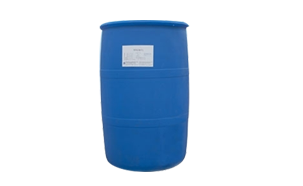Alkyl polyglucoside (APG) is a mild surfactant developed in the world since 1990s. These surfactants can be synthesized from renewable plant resources. They not only have broad-spectrum antibacterial activity, but also have the advantages of rapid and complete biodegradation and no pollution to the environment. This paper attempts to take two typical red tide organisms, Prorocentrum dentatum 0201-01 and red tide heterobay algae, as examples to explore the effect of APG surfactants on the growth and killing of red tide organisms, in order to lay a foundation for the development of the application of these compounds in the control of harmful red tide.

The application of surfactants in aquatic pharmaceutical preparations can improve their production process, appearance properties and administration forms, such as stability, clarity, hardness, water solubility, disintegration, solubility, color and taste. In practical application, it can improve the bioavailability of drug preparations, but on the other hand, improper use of surfactants will interact with various components in drug prescriptions and produce physicochemical changes (redox and catalytic hydrolysis), which will affect the stability of drug preparations and even the curative effect. When selecting varieties, it should be studied before application in practice.
With the unique activity mode of aquatic animals, the way of drug administration is also very different from that of terrestrial animals. The administration methods of aquatic animals are generally water administration and feed mixing. However, the latter is generally administered through water, which is limited by dissolution loss, feed disintegration time and palatability. So far, the feed mixing method is not very successful, and the former is still the main way of administration.
The major obstacle of water-based drug delivery is that many drugs are water-insoluble substances, which need to be transformed into dosage forms and change their physical properties. Surfactants have obvious advantages in providing water-soluble properties of drugs. Through the selection of appropriate surfactants, many water-insoluble drugs have been successfully applied locally in the field of aquatic products, such as water-soluble erythromycin, water-soluble chloramphenicol, water-soluble sulfonamide, water-soluble TMP, etc. Surfactants widely used in this field include BS - 12, TEG - 103, teg51, sodium dodecanol sulfate, tween, polyvinylpyrrolidone, alcohol ether phosphate, Pingjia 0 - 20, amide ether phosphate, alcohol ether carboxylate and amine oxide, and more and more unique surfactants are used to improve drug solubility.
Due to the huge drug delivery system in aquaculture, the dosage also increases. Therefore, the demand to improve the efficacy, reduce the drug cost and reduce the burden of aquaculture is becoming more and more urgent. The requirement of high efficiency and low price of aquatic drugs has become the common desire of the whole aquaculture industry. Therefore, the research on the efficiency of drug properties is becoming more and more active.
Scientists in western countries have used surfactants in the synergistic research of aquatic drugs as one of the key measures to solve many problems in this - industry, and have achieved - certain success. The varieties that have been successfully applied in this field include dodecyl betaine sulfosuccinate, alkyl glycoside APG, sucrose ester, SP - 80, octyl phosphate, aeo11 phosphate, dodecyl anion and cation pair surfactants, etc. After adding the above surfactants, the efficacy can generally be increased by 2 ~ 5 times, and the cost of aquaculture drugs can be effectively reduced by 2 / 3 ~ 4 / 5. Due to the reduction of drug dosage, the irritation of drugs to fish and shrimp in water is also greatly reduced, reducing the phenomenon of death caused by drug stimulation.